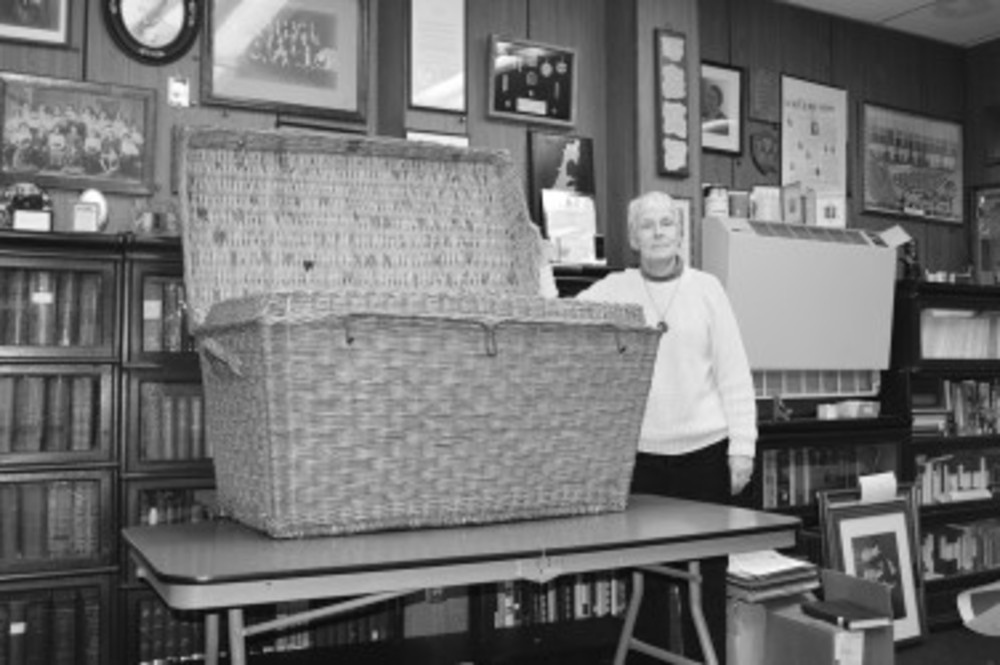The trunk in the office
 Vintage steamer trunks come in many sizes and shapes. They may be made of metal or wood or rattan. Just look on eBay and you will see the variety. Depending on their dimensions or appearance, they may have a second life as a coffee table, storage space or just an interesting addition to a room’s décor.
Vintage steamer trunks come in many sizes and shapes. They may be made of metal or wood or rattan. Just look on eBay and you will see the variety. Depending on their dimensions or appearance, they may have a second life as a coffee table, storage space or just an interesting addition to a room’s décor.
Wicker trunks or chests were especially popular among the early immigrants to this country. They were light, strong and could be locked to protect the contents. The Rhode Island Jewish Historical Association is the happy recipient of one such wicker steamer trunk. It is the subject of many a puzzled look. What is it – a large picnic basket? What is it doing in our cramped offices? Where did it come from?
In the spring of 1914, shortly before the assassination of the Archduke Franz Ferdinand and his wife Sophie in Sarajevo and the outbreak of World War I, a young Jewish family boarded an ocean liner in the German port of Bremen. Leo and Amelia Bojar and their infant son William left their home in Lodz, Poland, to begin a new life in the goldine medine (the golden land), the United States. Their necessities, their belongings, all they could take with them, were packed in a wicker steamer trunk.
The Bojars sailed aboard the S/S Barbarosa, a ship owned by North German Lloyd Co. The liner could accommodate 114 passengers in first class, 175 and 252 in second and third class, respectively, and 1832 in steerage. That last figure boggles the mind. What accommodations the Bojars enjoyed we do not know. Most immigrants came by steerage, packed in the hold of a ship with meager sanitary facilities available. Their steamer trunks would also have had to include food for the trip across the Atlantic Ocean. There were no dining rooms in steerage.
The Bojars lived for a few years in New York and then moved to Providence where Leo founded the Bojar Company, a jewelry manufacturer, in 1919. The company closed in 1996.
The trunk remained in the possession of three generations of the Bojar family. In March 2001, David Bojar donated it to Rhode Island Jewish Historical Association.
We are indebted to the former archivist of RIJHA, our dear friend, the late Eleanor F. Horvitz, who provided the provenance of the trunk. Originally, according to one of her notes, the trunk was supposed to be a star in the Heritage Harbor Museum Exhibit “Cultural Crossroads.” Eleanor had prepared blurbs to accompany it and a photo of the S/S Barbarosa in anticipation of the trunk’s starring role.
The wicker trunk remains in our office, a reminder of a different era, of generations that came before. Next time you plan a trip and complain about airline restrictions on baggage limits, think about packing your worldly goods in a trunk 25 inches high by 25 inches wide by 42 inches long in order to embark on a journey to a new life in a strange, unknown country without the benefit of a credit card.
Anne Sherman is the office manager of the Rhode Island Jewish Historical Association. To comment about this or any Rhode Island Jewish Historical Association article, email info@rijha.org.







